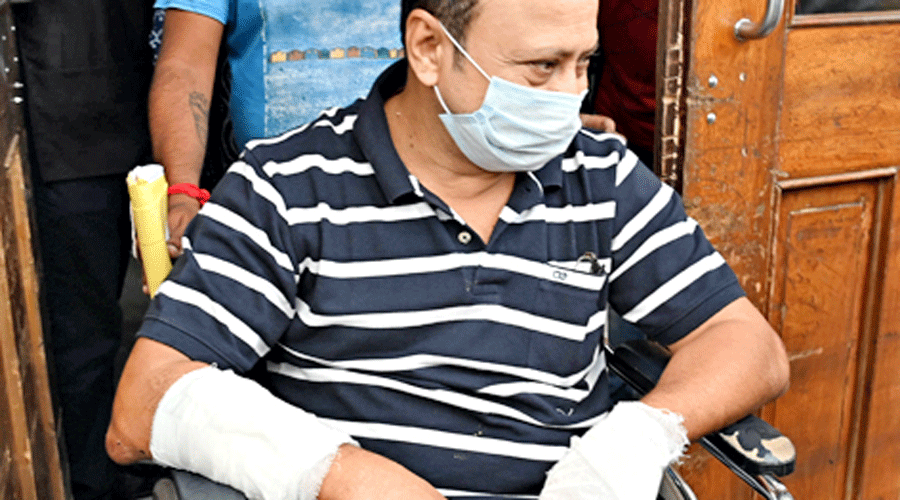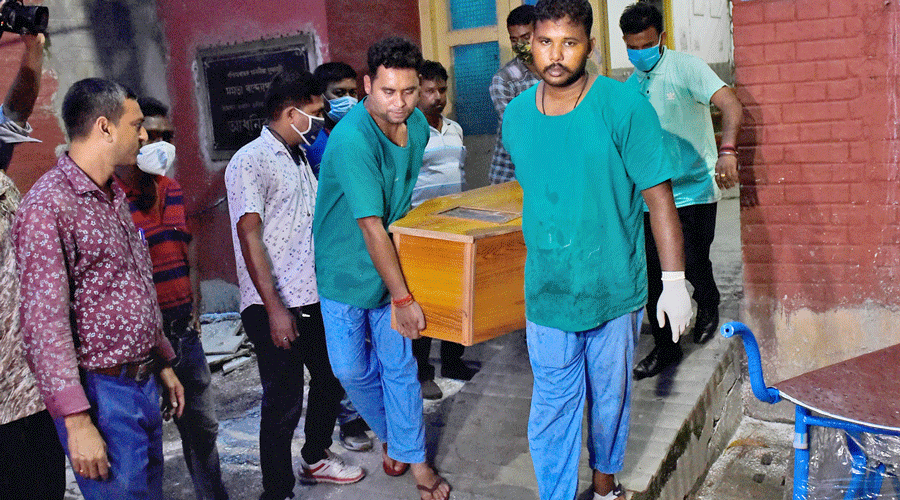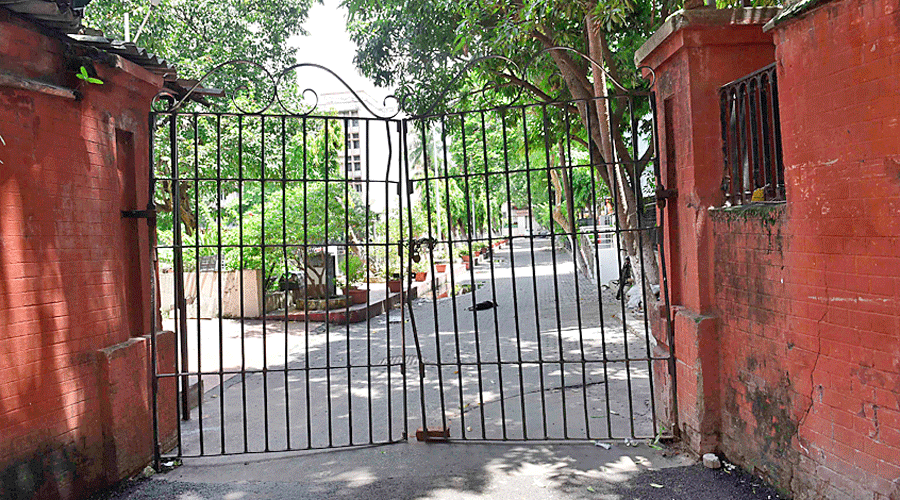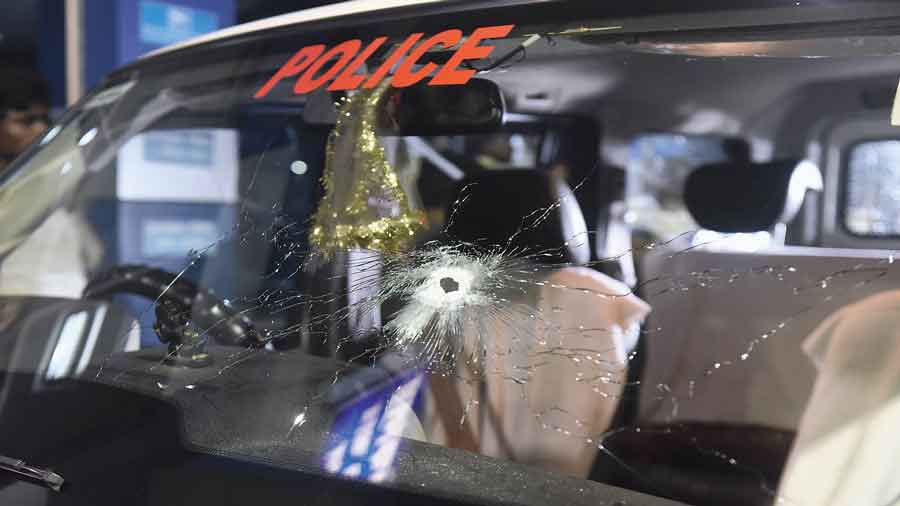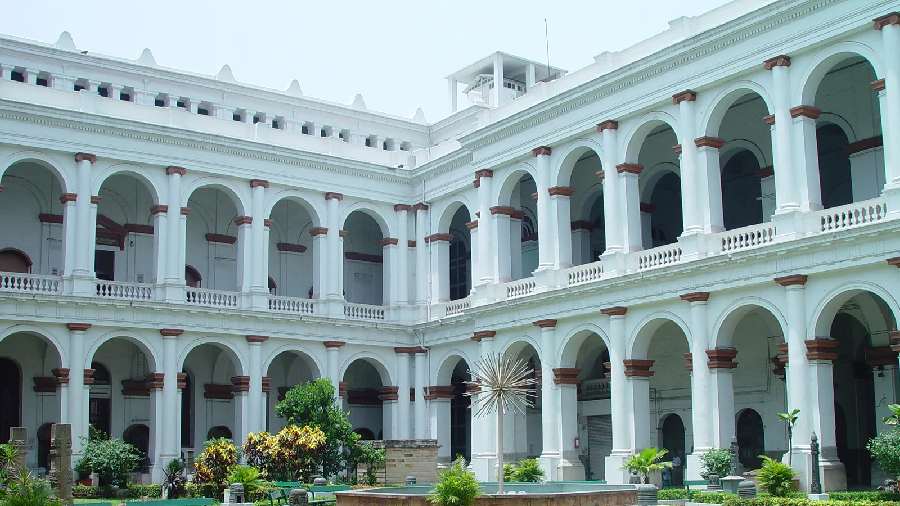Central Industrial Security Force (CISF) head constable Akshay Kumar Mishra did not fire indiscriminately on the Indian Museum premises on Saturday evening but was trying to shoot four of his colleagues who he alleged had mentally tortured him, CISF officers said.
The shooting, the officers said, started around 6.20pm after the roll call following the closure of the museum for visitors for the day. Mishra snatched the rifle of the line sentry head constable, S.K. Morthi, and fired at assistant sub-inspector Ranjit Kumar Sarangi.
“He fired a few rounds targeting Sarangi. As Sarani slumped, Mishra turned his attention towards assistant commandant Subir Ghosh, who was standing near his vehicle,” said a CISF source.
The source said he had seen Mishra “speak normally at least four-five times” to these officers earlier in the day.
Mishra again fired a few rounds, after which he dived to the ground, an eyewitness said.
“Immediately after that, I saw Ghosh’s driver jump into a water body. Maybe he was scared that he, too, would be gunned down,” the eyewitness said.
Several police officers said they had seen Mishra roam around in the garden of the museum with the rifle in his hand seconds after he had shot two of his colleagues.
An officer of Kolkata police who had reached the spot around 6.30pm, a few minutes after firings were reported from inside the Indian Museum compound, said he saw the shooting unfurl from outside the museum gate on Kyd Street.
“When I reached the spot, Akshay Kumar Mishra was roaming around in the garden with an AK-47. He was not shooting haphazardly. Rather he was looking for someone specific. I saw several central force personnel running for cover inside the compound. Some hid in the bushes, while one of them, who I later learned is a driver, dived into a water body to hide from Mishra,” said the officer.
Around 6.35pm, a team of officers led by deputy commissioner (central division) Rupesh Kumar entered the museum compound.
By that time, Mishra had entered barracks number four, which had the armoury.
Kumar and his team rushed to the area outside the armoury. Mishra had by then locked himself inside the armoury, which contained the entire stock of arms and ammunition sent for the museum’s protection.
The police communicated with Mishra through a loudhailer.
“We called him on his mobile phone. He took the call but disconnected it after uttering a few angry words. We kept trying but he was not responding. We again used the loudhailer and convinced him to take our call,” said an officer, who was part of the operation.
Kumar then engaged Mishra in a dialogue related to his hometown and his problems and assured him that he would not be killed if he stepped out.
“At this point, Mishra said he wanted to kill himself. The officers again counselled him for a few minutes and managed to convince him that he should allow the cops to enter the room and talk to him,” said the officer.
Mishra allowed the entry of Kumar and a few members of his team into the armoury only after ensuring that they were not armed.
Kumar and his team, who were unarmed but were wearing bulletproof jackets, faced Mishra, who was still carrying the AK-47 and had access to the whole armoury, an officer said.
Mishra was then convinced to surrender his rifle around 7.30pm.
The firing
■ CISF head constable A.K. Mishra snatched an AK-47 from a colleague and fired around 6.15pm
■ Mishra targeted assistant sub-inspector Ranjit Kumar Sarangi and fired a few rounds. Three bullets hit him
■ The next target was assistant commandant Subir Ghosh. Mishra again fired a few bullets, one of which hit Ghosh
■ Mishra looked around the garden for two of his colleagues
■ Deputy commissioner (central) Rupesh Kumar entered the compound with his team around 6.35pm
■ Cops used loudhailers and mobile phones to communicate with Mishra, who had locked himself in the armoury
■ Cops convinced Mishra to talk to them, assuring him he would not be killed
■ Kumar and some team members convinced Mishra to surrender
Police sources shared with The Telegraph the above sequence of events

